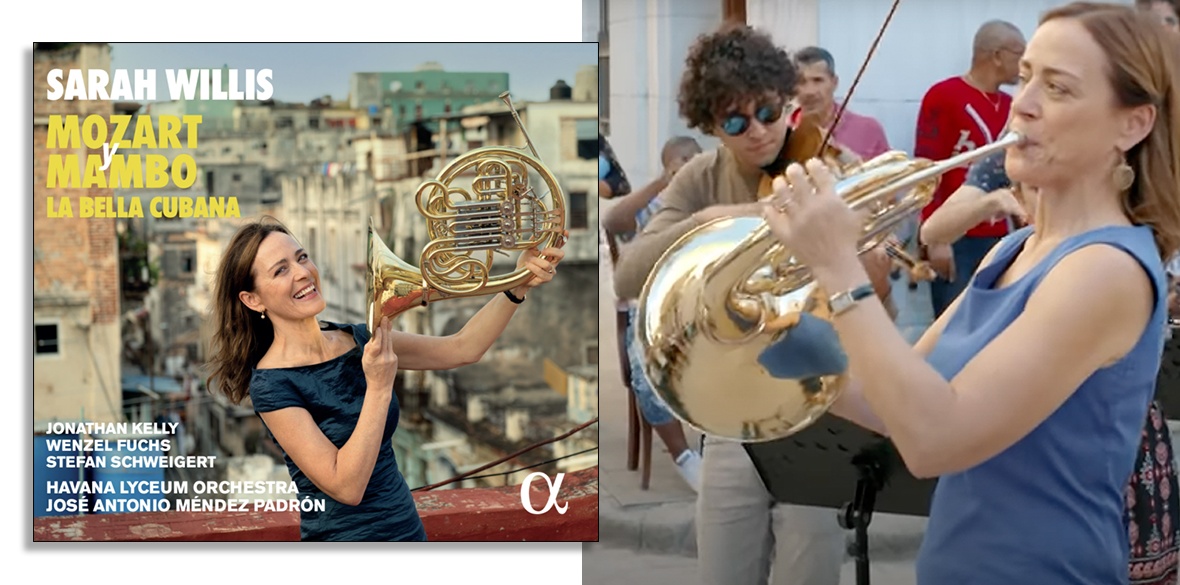This is the last article you can read this month
You can read more article this month
You can read more articles this month
Sorry your limit is up for this month
Reset on:
Please help support the Morning Star by subscribing here
To mark Mozart’s 250th birthday in 2007 a marble bust was unveiled in San Francisco de Asis Square in Old Havana. It was the work of Austrian sculptor Anton Thuswaldner, and a gift from the state government of Salzburg, Austria.
This prompted the formation of the Havana Lyceum Orchestra, founded by Pepe Mendez and fellow students from the Instituto Superior de Arte and the Escuelas Nacionales de Arte. The Mozarteum Salzburg together with Eusebio Leal, a Cuban historian, at the same time founded the Lyceum Mozartiano de La Habana, a cultural centre for classical music.
This connection between Salzburg and Havana has produced a wonderful set of musical collaborations. The first was in 2017 when Sony Classical released Mozart in Havana. Pianist Simone Dinnerstein joined the Lyceum Orchestra to record two of Mozart’s piano concertos.
Probably the orchestra’s most exciting collaboration has been with Sarah Willis, the British-American French horn player. In 1991, she took the position as second horn with the Berlin State Opera under Daniel Barenboim then joined the Berlin Philharmonic in 2001, under Simon Rattle, becoming their first female brass player.
She was asked to give a French horn masterclass in Havana in 2017 and was blown away by how many turned up. She decided then and there to raise the profile of the wonderful classical music-making going on in Cuba. The result has been three fabulous albums under the Mozart y Mambo banner.
These albums blend Mozart pieces with traditional Cuban music in increasingly interesting ways. The normally stuffy classical music magazine Gramophone thoroughly enjoyed the first disc: “Each of the five Cuban-inflected selections on ‘Mozart y Mambo’ has a distinct personality – and the variety is most welcome. Joshua Davis and Yuniet Lombida Prieto’s Rondo alla mambo (based on the finale of the Concerto, K447) offers Willis the opportunity to show off in an easy, breezy way, for example, while Jorge Aragon’s orchestration of the bolero Dos Gardenias (which you may recognise from the Buena Vista Social Club) evokes Nelson Riddle and Billy May’s lush scoring for Sinatra’s Capitol recordings.” Praise indeed.
The second album, Cuban Dances, was provoked by the maxim: “If you can’t dance it, you can’t play it.” She learnt the footwork as well as the notes to get to the heart of the six-part suite of dances she had commissioned (for horn, percussion and strings) from half a dozen young Cuban composers.
The result is a wonderfully elegant performance of some rhythmically complex dances. Pieces by Pepe Gavilondo, along with Yasel Munoz’s Tamarindo Scherz-son, Wilma Alba Cal’s Guaguanco Sencillo and Ernesto Oliva’s ¡Ay Comay! Un Changui pa’ Sari are thrilling. In the slower dances, there are flashbacks to “the glittering Havana of the ’40s,” as Willis puts it as in Jorge Aragon’s Un bolero para Sarah.
For the most recent album, La Bella Cubana, Willis plays Mozart’s Horn Concerto No 4 in E flat, K495 and the Sinfonia Concertante for four winds with colleagues from the Berlin Phil, demonstrating that she is a true Mozartian. Pepe Mendez, founder of the Havana Lyceum Orchestra, deserves great credit as the orchestra’s playing matches hers with their vitality and swing.
And there is another side to this project: profits from the records go towards the Instruments for Cuba Fund: buy them and support these wonderful musicians. What better Christmas gift!












